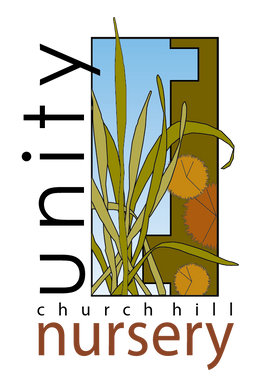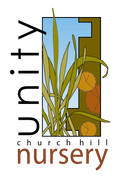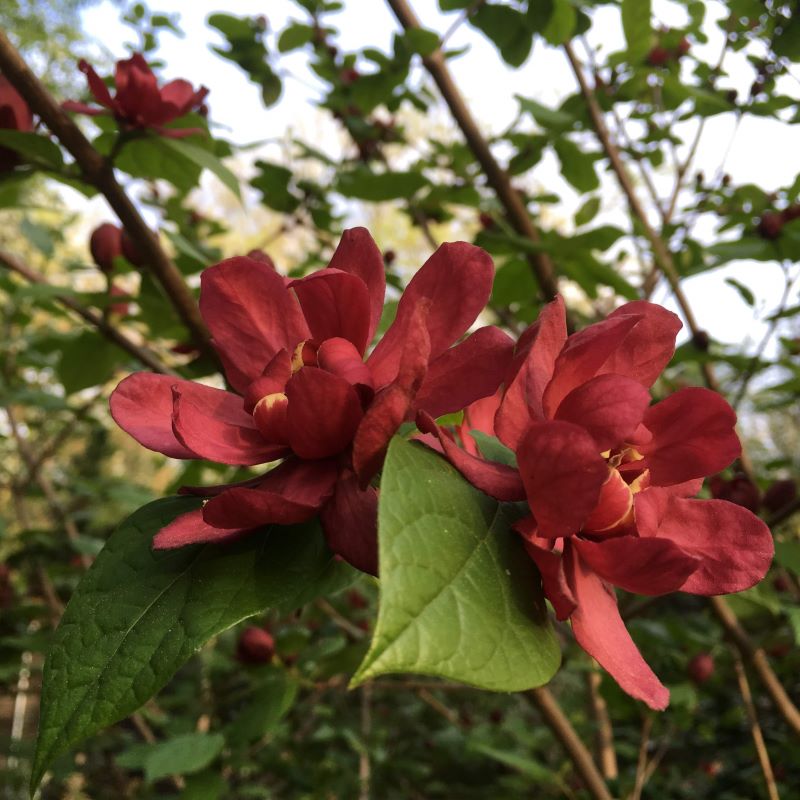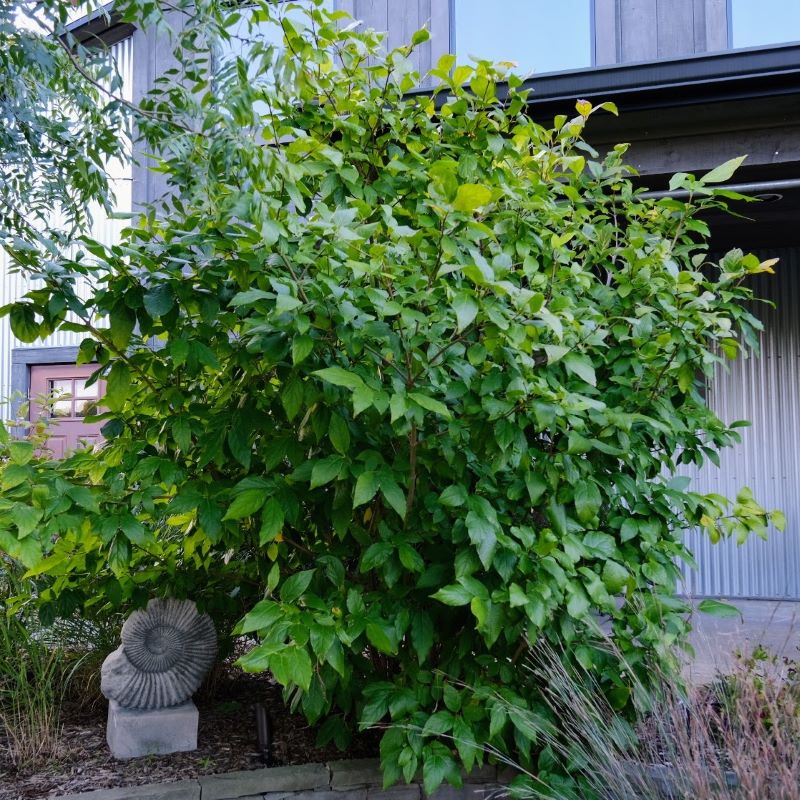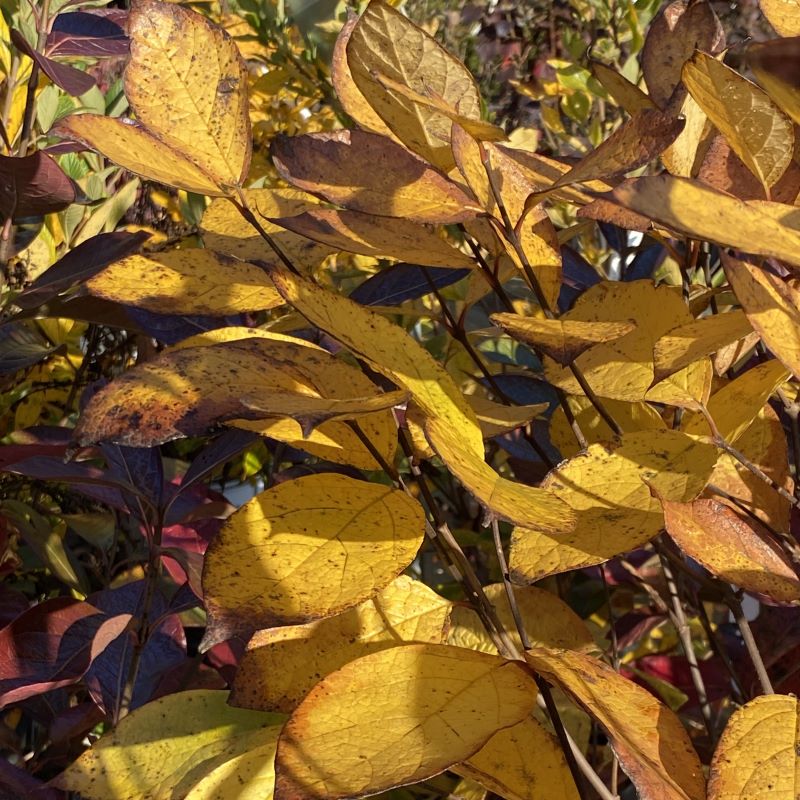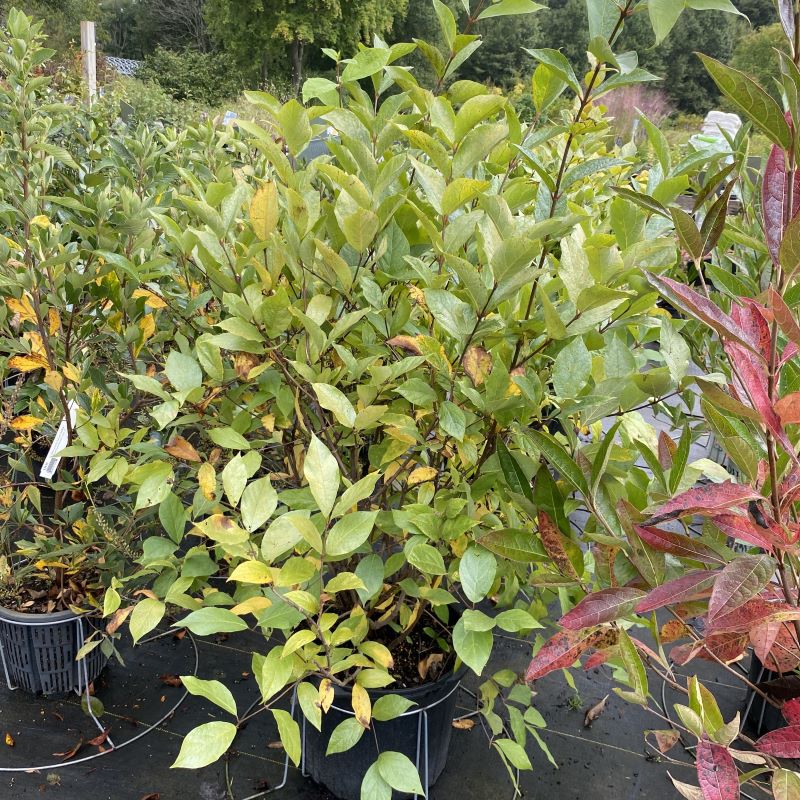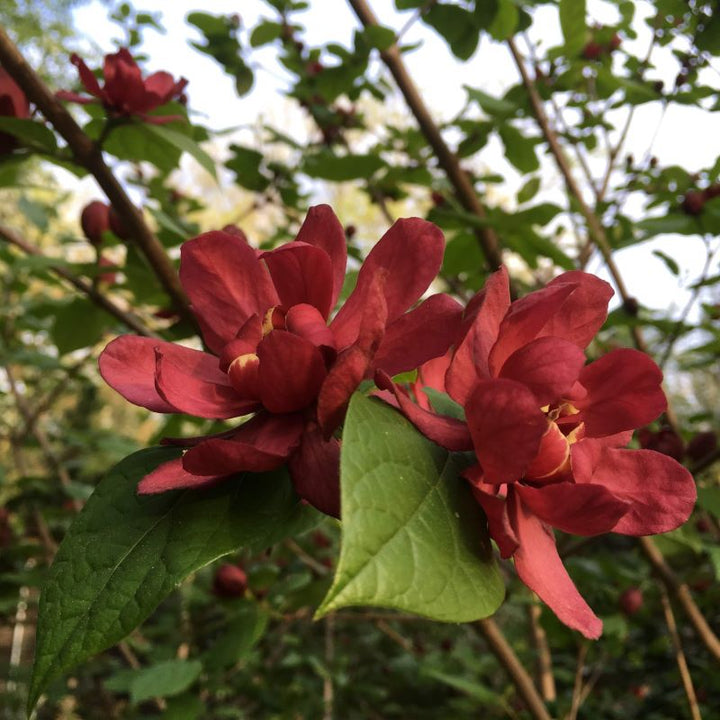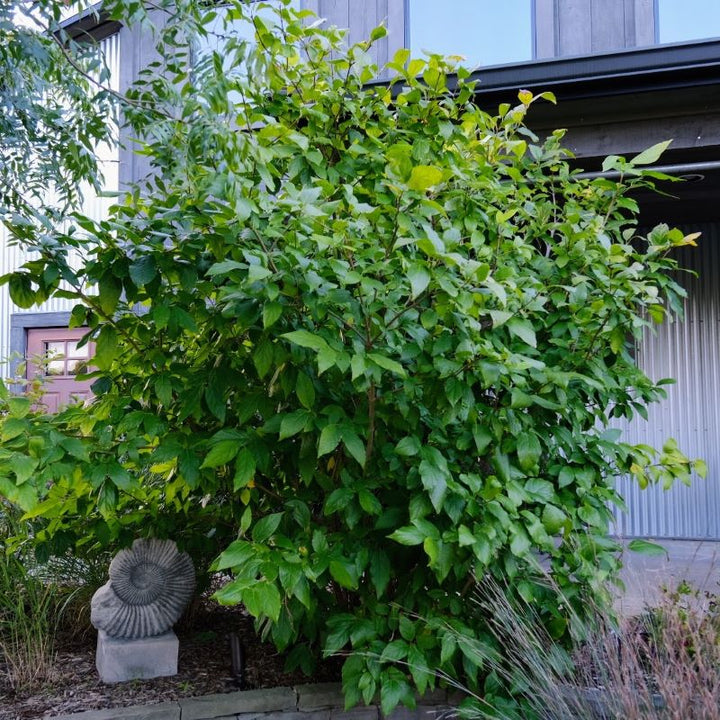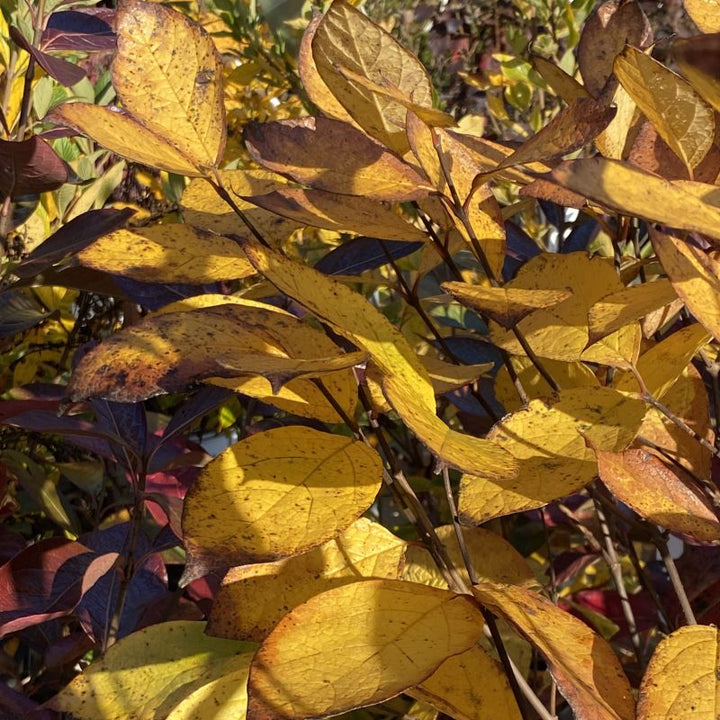Calycanthus floridus (Sweetshrub) Unity Grown
- In Stock
- Inventory on the way
Calycanthus floridus, commonly called Carolina allspice or sweetshrub, is a dense, rounded, deciduous shrub or small tree that grows to 6-9' tall and slightly wider. Native along the Atlantic coast from New York to Florida and west to Mississippi, Calycanthus floridus is perhaps best known for its tropical-looking brownish maroon to red flowers that bloom on the ends of branches at irregular times throughout the spring and summer. Both leaves and flowers are pleasantly aromatic, with most people describing the smell as fruity and spicy, and with others comparing the scent to Juicy Fruit gum. Large, showy flowers are not the only ornamental draw, however, as Calycanthus floridus foliage also turns to an attractive golden yellow color in the fall, adding multi-season appeal alongside its ecological value.
Sweetshrub flowers are attractive to a variety of butterflies, like the unique saddleback caterpillar moth (Acharia stimulea) which uses the tree as a host during its larval stage. In addition to moths, butterflies, and caterpillars, Calycanthus floridus attracts a number of other insects, including several species of beetles, which it attracts to with the same spicy smell the plant is named for to assist with pollination in a process called cantharophily. This process, where flowers are pollinated almost exclusively by beetles, is uncommon among plants and hints at this species' unique flower adaptations and appearance, just like magnolias, which also rely on beetles for pollination. Calycanthus floridus prefers full sun or partial shade, and sites with moist, well-draining soils, although it is also tolerant to heavier clay soils, occasional flooding, and full shade conditions. Beyond its unique ecological appeal and its obvious ornamental appeal, Carolina sweetshrub is resistant to deer and rabbit damage, and is sure to add a lovely aroma around the home.
Note: It may be best to purchase sweetshrub when in bloom, as the intensity of fragrance can widely vary between individual plants. To maintain shrub shape, prune immediately after flowers die back, as new flowers will bloom on the previous season's growth.
